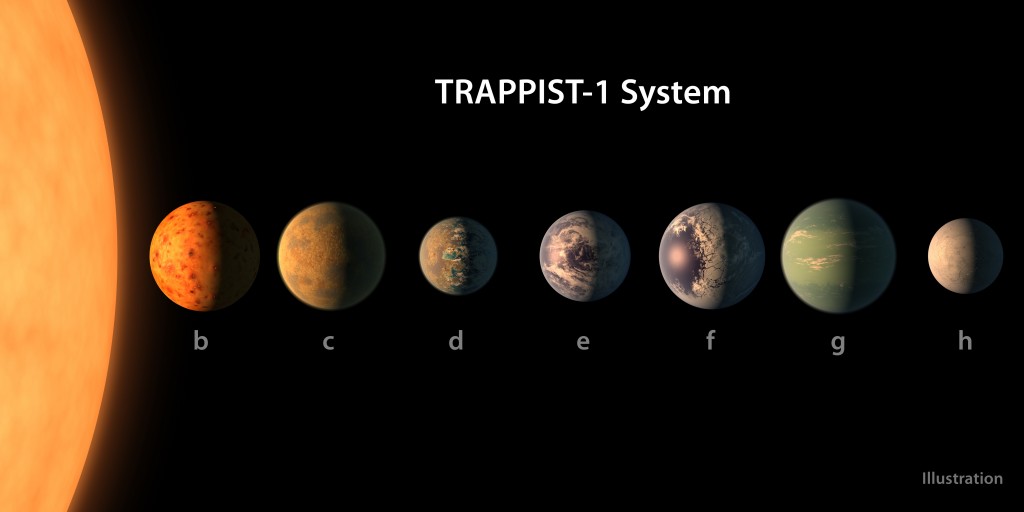For the first time, astronomers have discovered seven Earth-size planets orbiting a single nearby star — and these new worlds could hold life. This cluster of planets is less than 40 light-years away in the constellation Aquarius, according to NASA and the Belgian-led research team who announced the discovery 22 feb. 2017.
The planets closely circle a dwarf star named Trappist-1, which at 39 light years away makes the system a prime candidate to search for signs of life. Only marginally larger than Jupiter, the star shines with a feeble light about 2,000 times fainter than our sun.
TRAPPIST-1 is so small that it resembles Jupiter and its planets appear more like the jovian moons when laid out, distance-wise. TRAPPIST-1b has an orbital period of just 1.5 days and orbits at 1 percent the distance between the Sun and the Earth. Because TRAPPIST-1 is so small, though, instead of dooming the planet, it could give it just a slightly balmier-than-comfortable temperature.
Scientists said they need to study the atmospheres before determining whether these rocky, terrestrial planets could support some sort of life. But it already shows just how many Earth-size planets could be out there — especially in a star's sweet spot, ripe for extraterrestrial life. The more planets like this, the greater the potential of finding one that's truly habitable. Until now, only two or three Earth-size planets had been spotted around a star.
They all appear to be tidally locked, which means the same side continually faces the star, just like the same side of our moon always faces us. Life could still exist at these places, the researchers explained.
Source: NASA, theguardian.com, timesofindia
